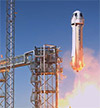American Public Power Association: A Smart Way to Deliver Power
Public power communities plug into smart grid technology.
Winter 2011
Dawn of the Smart Grid
Glenn Steiger, general manager of Glendale Water and Power in California, views the dawn of the electric smart grid similarly to the advent of the iPhone. Smart grids are bringing incredible new technology to electric distribution systems, but he's certain that the most exciting advantages have not yet been imagined. He says of the iPhone, "more applications are being developed every day. We expect the same thing with the smart grid."
Steiger is one of the visionaries guiding a growing smart grid movement among publicly owned power utilities. In his community, federal stimulus funding is helping to deploy smart grid technology rapidly.
Glendale Water and Power is a prime example of a public power utility living on the cutting edge - which happens to be where many such utilities like to live. Some Americans wrongly assume that public power providers, since they are government-linked entities, must be behind the times. But public power - which tends to be inexpensive and highly reliable - has forward-thinking providers that are responsive to both business and residential needs.
That's why public power utilities are eager to plug into the future with smart grid technology.
So what's so smart about the smart grid? "It gives customers far more choices in how they deal with the utility," Steiger says. "It allows them to save money and control various applications in their homes and businesses."
Smart grid technology adds sophisticated meters and controls to the power system. Smart meters remain in constant contact with the utility's central control systems, providing real-time data on power usage and issues. In Glendale, wireless meters communicate with each other, as well as data collection points that are hooked into the central office via fiber optic cable.
The availability of sophisticated data means customers can better monitor and control their power usage right now, not a month from now when the bill arrives. "We know what a customer is using, and the customer also sees the data," Steiger says. Smart grids also integrate well with green technologies such as electric vehicles and solar applications.
Additionally, the technology helps the utility monitor the power network for trouble. "Today, when your lights go out, you call us and we fix it. With a smart grid, we know where the outages are, and we can fix most outages without even sending a crew out," Steiger says. "The distribution system will be mostly self-healing."
That kind of reliability - along with empowering customers to take control of their usage and encouraging efficiency - were some of the goals of the smart grid project in Leesburg, Florida. Leesburg got into the smart grid game as a way to combat skyrocketing wholesale power costs. A 2008 business plan projected operational savings of $900,000 for the electric system and $400,000 for the city's water system. In 2009, the city was one of 33 public power providers to land a smart grid grant from the U.S. Department of Energy under the American Recovery and Reinvestment Act. The grant helps the community install smart meters for its 23,000 customers, along with more than 4,000 energy-management systems that give customers new control over air conditioners, water heaters, and other electric devices.
Project Announcements
GE Appliances Expands Jefferson County, Kentucky, Operations
06/30/2025
ValorFlex Packaging Plans Bowling Green, Kentucky, Production Operations
06/30/2025
Neuro.io Plans Terrebonne Parish, Louisiana, Operations
06/30/2025
Germany-Based MTU Maintenance Expands Fort Worth, Texas, MRO Operations
06/30/2025
Cascade Die Casting Group Expands High Point, North Carolina, Manufacturing Operations
06/30/2025
BuildOps Plans Raleigh, North Carolina, Operations
06/30/2025
Most Read
-
20th Annual Area Development Gold and Silver Shovel Awards
Q2 2025
-
First Person: Joe Capes, CEO, LiquidStack
Q2 2025
-
The Legal Limits of DEI in Incentives Agreements, Hiring, and Contracting
Q2 2025
-
From Silicon to Server: Mapping the Data Center Supply Chain
Q2 2025
-
39th Annual Corporate & 21st Annual Consultants Surveys: What Business Leaders and Consultants Are Saying About Site Selection
Q1 2025
-
Rethinking Life Sciences Site Selection in a Resilient and Dynamic Market
Q2 2025
-
Top States for Doing Business in 2024: A Continued Legacy of Excellence
Q3 2024













